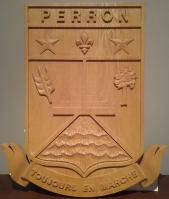2011 - 2012
GATHERING AT ISLE-AUX-COUDRES (20TH AND 21ST AUGUST 2011)
The Island of Dreams … still as Enchanting as in 1996
English version: Cécile Perron (129)
Once again, Perrons from here and there, along with parents and friends, were thrilled to answer Jean-Claude’s invitation to meet at Isle-aux-Coudres. And once again it was a beautiful gathering, this time to celebrate our Association’s 20th anniversary.
Several participants had arrived the evening before and on Saturday morning, they headed toward the welcoming committee table. They were greeted by Jean-Claude, host of the celebrations, assisted in turns by his daughter Marie-Noëlle, his sister Claudette, and two members of the organizing committee Christiane (631) and Claudine (795). Along with their ID card, each participant received a memento from the organizing committee, a bookmark designed by Pascale Perron, representing the Perrons of Isle-aux-Coudres. President Gabrielle (313) was there also presenting everyone with an elegant carry-on bag bearing our coat of arms and made especially to mark the event. How nice it was to find ourselves once again in the rustic hall of the Perron hotel Les Voitures d’Eau where we would perhaps have the opportunity to talk with Captain Éloi Perron (592).
Members presented their Perron Passport to George (491) for stamping. Many renewed their membership; we also welcomed several new members. Others gathered at Michel’s table to find out more about their lineage. Here and there were clusters of people eager to meet and exchange the latest news, and recall some good moments before leaving for the first Guided Tour of the Island.
« Saturday at exactly 9:30 we left for the tour of the island. Everybody looked happy and ready to store up all the information that Michel (593), our guide and son of Captain Éloi, was about to give us. At once his love for and intimate knowledge of his island were felt by all.
First stop: Les Voitures d’Eau Museum
Located on Pointe à Antoine, true territory of the Perrons, and opened in the early 1970s, this museum is a reminder of river navigation of yesteryear. The owner, Captain Éloi Perron, has 40 years of experience in navigating and is one of the last witnesses of that era.
Collection pieces attest to the evolution of merchant boats that used to run, especially during the summer months, between villages and the cities of Quebec, Trois-Rivières and Montreal.
Sailing boats were soon replaced by vessels powered by diesel engines such as the Kahlenbery shown here. A visit, from hold to helm, of Captain Éloi’s boat, the impressive Mont St-Louis, gave us a sense of what a harsh and demanding life seamen had at the time. Fishing-boats ‘Théodore’ and ‘Josiane’ offered an occasion to recall some of the fishermen’s deeds at l’anse à Michon. With passion, Michel informed us about the tides of the St-Lawrence, and the purpose of red, green, black, or numbered buoys.
From 1930 onwards, a ferry ran between the island and St-Joseph-de-la-Rive; that schooner bore the name Isle-aux-Coudres. Nowadays two ships ferry people and cars across, the N.M. Joseph-Savard and N.M. Radisson.
Second stop: Windmill and Watermill
In 1752 there was only one windmill, located at Pointe de l’Îlette (or l’Islet), to grind the peasants’ grain and supply the whole population. A second windmill was built in 1773 at the côte de la Baleine, but there was still a shortage of flour. Much later, in 1825, the inhabitants received permission from the Jesuits of Quebec Seminary to build a watermill on the bank of rivière Rouge (Red river). Eventually the l’Îlette windmill was abandoned and then demolished, and another was built in 1836 near the watermill. Those are the very mills that we visited. Later on, the miller’s house would be added (1910-1915) and Étienne Bouchard would live on the top floor.
At the Watermill we were given a demonstration of wheat and buckwheat milling. We could even buy some flour freshly milled on genuine millstone as was done in the past. Explanations were expertly given by our guide Myriam, who described the trough that brings water to the mill and showed us samples of differently ground flour. The young miller explained the mechanism of the big wheel, the main millstone and the gears, ending with a demonstration of buckwheat milling. A pleasant flour scent spread across the room. It was only when we walked down into the basement that we could see and hear the gears in motion.
At the Windmill, we really had to be in good shape to climb up to the top floor, just under the roof. We learned that the roof is not fixed in one position but is adjusted with a long pole according to the direction of the wind. Thus the mill could operate regardless of changes in wind direction. What an enlightening visit we had of those structures! Several of us stopped at the boutique to buy flour, recipe books or products of local craftsmen.
Third stop: Cidrerie Pedneault
At the administrative center of St-Bernard parish we were welcomed with open arms … and open bottles. There we sampled prune, pear and peach ciders, among others. Remarkably the Pedneault family has owned that enterprise for generations. Pride was being sold by the bottle and the Perrons made sure to purchase a few.
Back on the tour, we saw several crosses along the road; they speak volumes about the faith of the inhabitants who gathered there to pray. The St-Pierre Chapel served as a station during the Corpus Christi processions. Our attention was brought to a big rock far out in the St-Lawrence, named ″the Old Indian″ by the ancestors because of the likeness. It was interesting to learn that the sea never covers that rock. Another tourist attraction is the crying rock … According to the legend, Charles Desgagnés’s bride-to-be was turned to stone and is still crying her lost lover who set sail toward the old country in 1805, never to return. Further on, at the ‘pointe du bout d'en bas’, we saw a beautiful blue statue called Notre-Dame du réel, actually Notre-Dame de l'Assomption; a statue erected in 1960 by Horace Pedneault in gratitude for his recovery. Then a last and rare ‘specimen’: the crooked house, a major attraction for tourists. The windows are crooked …. Beware, appearances may fool you.
We can thank Jacques Cartier for discovering the beautiful Isle es Couldres in 1535. And our thanks to Michel whose detailed and colourful anecdotes made the visit so pleasant. He is a born story-teller. It was a pleasure to listen to him and we hope that one day there will be a book to once again remind us of all that knowledge and the great love he has for his island. » (Jeannine)
We wonder if the Perron ‘tourists’ who took the morning tour of the island have per chance seen Fabrice and Marie-Gabrielle Perron who were touring on their own on a tandem bike. Around noon we headed for Le Mouillage, a lunch bar near the museum. A light snack and a few moments of relaxation in the sun with friends … could we ask for more? Some took time to walk around and photograph the commemorative plaque erected at la Pointe à Antoine in 1996. In the afternoon while the second group of Perrons went on their guided tour of the island, some participants viewed a short film by Pierre Perreault titled C’est le beau plaisir.
« We were shown a film about beluga fishing as it was carried out long ago. That animal first described by Jacques Cartier during his 1535 trip, was called ″marsouin″ (porpoise), but was in reality the beluga of the St-Lawrence. It has been hunted by our ancestors from the time that French pioneers settled in New-France until the 1920s. The beluga is now under protection following a 1979 decree. However, the inhabitants of Isle-aux-Coudres received a special permission to re-set a beluga trap in order to demonstrate the method used by the elders. Incidentally, the beluga was captured alive for the purpose of this film, then sold to an aquarium.
The elders first demonstrated how to prepare the hundreds of poles they would need. Those ″poles″ were trunks of young trees two inches (5cm) in diameter and around 20 feet (7m) long. We saw them set the trap by driving stakes in the seabed at low tide. Those had to be well placed and well distanced from each other, and most importantly, the trap had to be given the right shape. At high tide the belugas followed the small fish upon which they feed, and then became imprisoned in the trap when the waters receded.
The origin of this practice in New-France is much debated. Some say that it was brought here by the French while others state that the method was taught to the early pioneers by the Amerindians. Whatever the case may be, research has shown that the Amerindians hunted the beluga for its meat. It seems that our ancestors were not fond of beluga meat but hunted it solely for the oil they obtained from the fat of the animal, which can represent up to 35% of its total weight. That, no doubt, was an important source of income for our ancestors.
People were quite pleased with the film. Myself in particular because one of my Grondin ancestors obtained a permit for beluga fishing at Rivière-Ouelle in 1744. I wrote his story last year, and viewing this film brought back lots of good memories of the research I had done then. Moreover, I bought the Isle-aux-Coudres DVD collection. For a history enthusiast as myself, it is a real treasure…» (Gilles)
Our Mass of Gratitude
The faithful attended the Perron mass at the Saint-Louis church, co-celebrated by Fathers Raymond (332) and Renaud (493) Perron, both from Sherbrooke, and M. Denis Falardeau, curate of Isle-aux-Coudres. As mentioned in a former bulletin (Vol. 13; No 2, p.2), the statue of Saint Louis which rises between both steeples is the work of Louis Jobin (1844-1928), master sculptor of sacred art. This stone church, which dates to 1885, shows a splendid interior and holds in its loft a magnificent Casavant organ. Mme Bouchard of Petite-Rivière-St-François was the organist for the occasion.
Once again the Perrons bowed their heads in prayer and thanked their ancestors for the rich heritage passed on by them. After mass, to everyone’s great pleasure, the choir began to sing Partons la mer est belle ! Of course, we remember that moving song of our Canadian folklore that we all have heard and learned in our youth ! With one voice, the whole congregation joined the choir in a rendition that made the walls vibrate. What a beautiful way to do homage to all the seafaring men of Isle-aux-Coudres, to those who perished and to those who survived, as well as to Charles-Émile Gadbois who founded La Bonne chanson, a compilation of our most beautiful French and Canadian songs. We thank Réjeanne for asking the choir to add that song to their repertory that day.
Everyone then assembled in front of the church for a group picture and to allow a short film sequence to be recorded for a TV program on old-stock families to be aired later on TVA and LCN. Then all returned to the hotel for a festive supper followed by a social evening.
Supper and Social Evening
Awaiting us was a cocktail that we sipped while listening to our host Jean-Claude`s words of welcome. Then he invited everyone to take their place at the dining room tables. Servers promptly brought dish after dish to the tables in a most impeccable, professional way. Soon we were enveloped by voices of every tone and tempo, interspersed by hearty bursts of laughter. The Perrons were enjoying themselves.
Past president Claude G. (5) once said that the MC usually starts animating the evening between the soup and the main course. That Saturday night 2011, Jean-Claude was the MC. When came the moment for the Association to render homage to its members, Jean-Claude gave the floor to Gabrielle. Several couples celebrated a wedding anniversary this year: Captain Éloi Perron (592) and his wife Pierrette Harvey, 60th year; André Perron and Aline Naud, 50th; past president Normand Perron (552) and Mariette Gaudreau, 51st; and Lise Perron (587) and Gérard Pleau, 50th. The traditional certificates were presented by the president and the flowers by a member of the family or a member of the organizing committee. Jean-Claude’s aunt, Mme Anne-Marie Perron, the eldest member of the family at 93 years of age, also received a message of admiration and gratitude from the family and the Association. Pretty seven-year old Érika Perron and five-year old Noémie Perron walked over to ″Tante″ Anne’s table to offer her a magnificent bouquet of flowers.
For this very special Perron gathering, the Association had invited some young Perron celebrities: actress Marie-Chantal Perron, humorist Alex Perron, himself born in Isle-aux-Coudres, pianist Francis Perron, hockey star David Perron and reporter Darren Perron. Unfortunately, they were unable to attend but sent their regrets and good wishes. Jean Perron (925) of the world of hockey and ex-coach of the Canadiens de Montréal team had been registered along with his wife, but had to cancel at the last minute. As well artist Jimmy Perron who had planned to paint a work of art on the spot was needed elsewhere. President Gabrielle informed us of everyone’s regrets and their wish for a happy and beautiful gathering. Vermonter Darren Perron, who had just come back from an assignment in Afghanistan, sent his wishes via a DVD to be viewed during the weekend. Still, we were delighted to welcome a newly-married couple, historian Fabrice Perron (940) and Marie-Gabrielle of France, who had chosen to spend their honeymoon in Canada at the very time of the Perron gathering. They were enthusiastically greeted by the crowd. Vigourous applauds also went to Pierrette, the captain’s wife, and to Rolande, Jean-Claude’s aunt, who delighted us with songs of their young days.
A large number of door prizes were offered. Three special prizes, part of a fundraising for the organizing committee, were also drawn and the winners were: Micheline (393) and Jeannine (293) for an overnight stay with breakfast at Les Voitures d’Eau; ″Tante Lila″ Rosalia Bouchard for a painting by Jimmy Perron; and Jonathan Dessureault for the Perron coat of arms sculpted and donated every year by Jean-Claude. Several members of Jean-Claude’s family were present including his brother, his sisters, six nephews - what a beautiful lot those young of the future! - and cousins. Music and dancing with the participation of a local animator provided enjoyment for the rest of the evening.
General Annual Meeting and Farewell Dinner
Just before the start of the general meeting on Sunday morning, we viewed Darren Perron’s message on DVD. Darren is Gabrielle’s cousin.
Forty-two members of AFPA, some accompanied by their spouse, attended the general meeting. No elections were needed this year and the board of directors remains the same, although some of the positions have changed: President: Manon (719), first Vice-president: Gaby (313), second Vice-president: Cécile (129), Secretary: Michel (284), Treasurer: Michel (152), and directors, Rhéal (492), George (491), Normand (838) and Robert (901).
During a delicious lunch, we had a final opportunity to chat before saying goodbye to parents and friends, and taking the road back home. Our 20th anniversary celebrations had been a real pleasure thanks to Jean-Claude and his committee, to Michel and to the whole team at Hotel-Museum Les Voitures d’Eau. We are grateful to them all for allowing us to once again enjoy wonderful moments on their island of dreams which remains as enchanting as ever. (Cécile)
Sources: see French version
Note: The English title of Perreault’s documentary Pour la suite du monde is: For the Ones to Come.

|
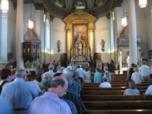
|
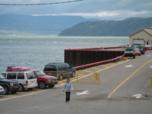
|

|
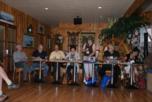
|
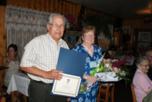
|

|

|
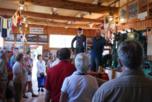
|
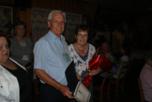
|
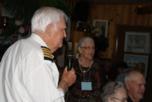
|
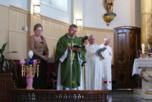
|
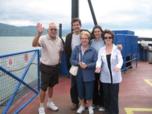
|

|

|
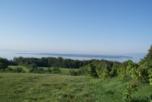
|

|
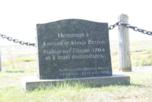
|
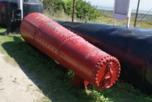
|

|

|

|
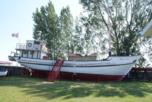
|
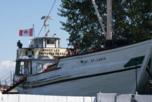
|
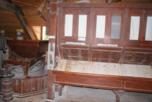
|
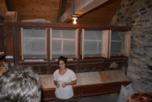
|

|

|
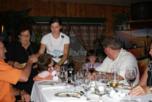
|
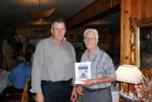
|
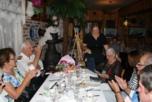
|

|

|
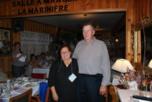
|
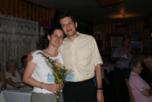
|
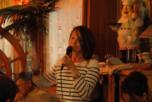
|

|

|
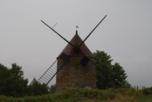
|
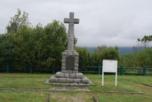
|

|

|

|

|
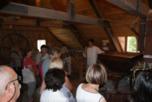
|
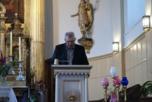
|
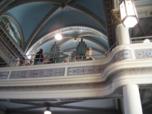
|
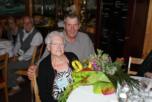
|
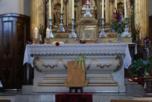
|
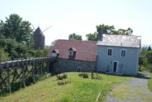
|

|
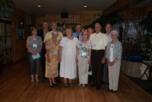
|

|

|
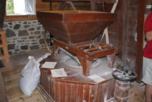
|

|
|

